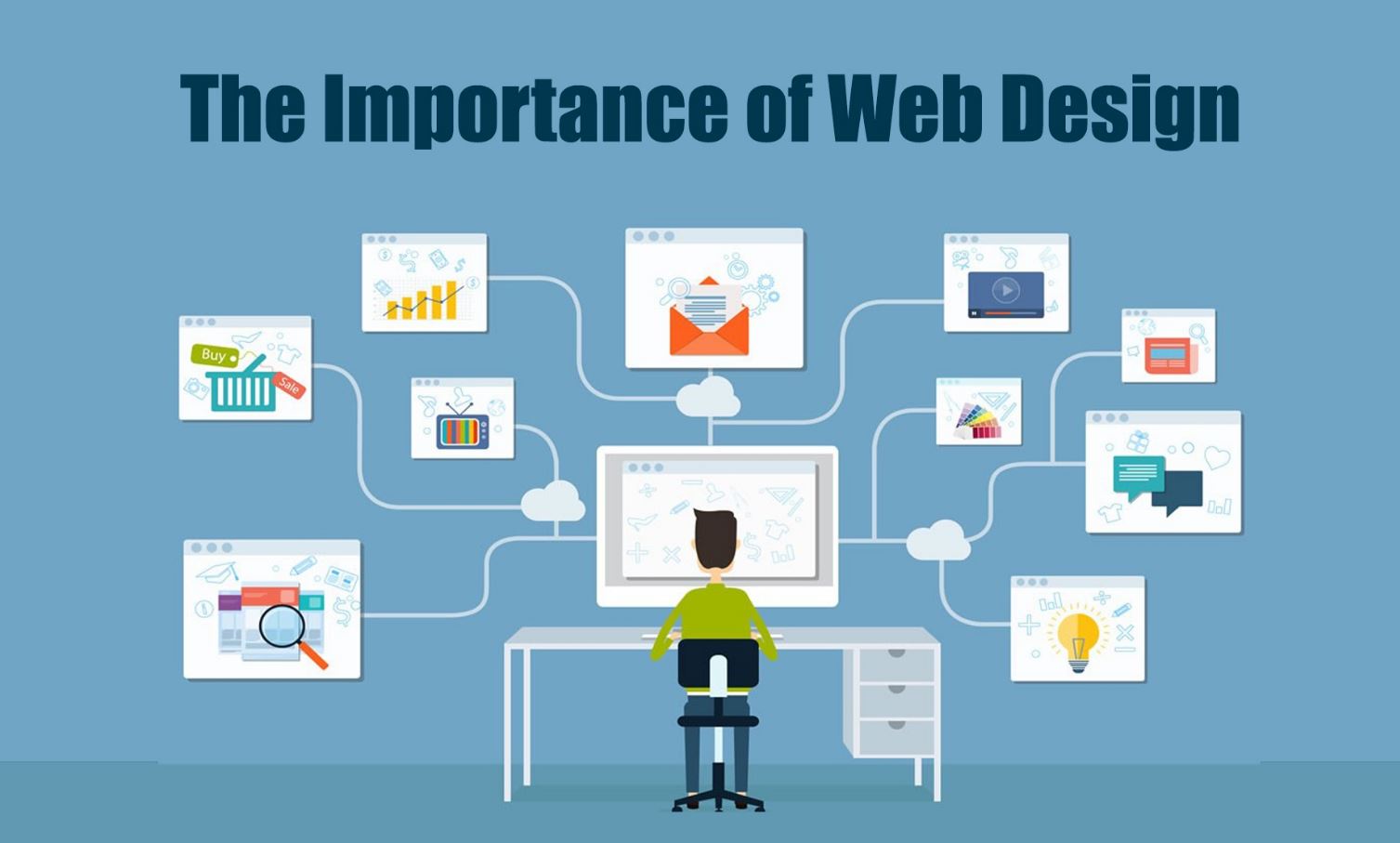The Benefits of Custom Web Design Over Template-Based Solutions
The Benefits of Custom Web Design Over Template-Based Solutions
Blog Article
Just How Efficient Internet Design Can Boost Individual Experience and Conversions
In the increasingly competitive electronic landscape, reliable website design plays a crucial role in enhancing user experience and driving conversions. By concentrating on user-centric concepts, such as clear web content power structures and instinctive navigation, organizations can develop engaging platforms that not only attract visitors yet likewise promote smooth interactions. As we discover the key aspects that add to successful internet layout, it becomes evident that the effect on user contentment and conversion prices is extensive. Comprehending these dynamics may discover techniques that might transform how users involve with your site.
Relevance of User-Centric Style
In the world of website design, prioritizing user-centric layout is extremely important for creating reliable digital experiences. This method concentrates on comprehending the demands, preferences, and actions of users, ensuring that electronic interfaces are intuitive and obtainable (Web design). By incorporating individual feedback right into the design procedure, web developers can craft experiences that reverberate with their target audience, ultimately causing raised interaction and fulfillment
User-centric layout highlights functionality, which is essential for reducing and keeping individuals bounce prices. When users can navigate a web site easily, they are a lot more likely to explore its material and convert into consumers.

Key Aspects of Efficient Format
Efficient format functions as the backbone of user-centric web design, converting individual needs into visual frameworks that assist in interaction. A well-organized design prioritizes material with a clear pecking order, leading customers' eyes to crucial information initially. This hierarchy is typically developed making use of spacing, dimension, and color, ensuring that vital aspects stick out.
One more crucial element is making use of whitespace, which prevents congestion and enhances readability. Web design. Whitespace enables aspects to take a breath, making the general design show up cleaner and easier to browse. In addition, uniformity in layout elements, such as colors and fonts, promotes experience and count on, enabling individuals to navigate the site with better simplicity
Grid systems can also be important, offering a framework that straightens material logically and visually. This alignment improves the user experience by creating an organized visual flow. Flexibility in format-- like receptive layout-- makes sure that web sites do well throughout different devices, providing to diverse user preferences.
Eventually, an effective format not just astounds users however likewise urges them to engage more deeply, inevitably fulfilling and driving conversions business objectives. By concentrating on these essential elements, designers can develop designs that resonate with individuals and boost their general experience.
Navigational Ideal Practices
Clear and intuitive navigating is essential for improving customer experience on an internet site. A well-structured navigation system permits users to locate information rapidly, which directly affects their contentment and chance of conversion - Web design. Executing a hierarchical framework is essential; make use of classifications and subcategories that realistically team relevant material, making it less complicated for visitors to explore
Uniformity in navigation aspects is likewise vital. Ensure that buttons, menus, and web links preserve harmony in style, color, and placement across all pages, providing users with an acquainted structure as they browse. Additionally, use descriptive labels for navigation items. Rather of generic terms, go with clear tags that precisely show the material, assisting customers in making notified decisions.

Mobile Responsiveness and Availability

Accessibility, on the other hand, focuses on making internet sites usable for people with disabilities. see this page This consists of adhering to guidelines such as the Web Material Accessibility Standards (WCAG), which resolve concerns like shade comparison, message size, and keyboard navigating. By implementing these requirements, web designers can develop inclusive experiences that satisfy a broader target market, thereby enhancing customer interaction and contentment.
In addition, mobile responsiveness and availability not only improve user experience however additionally favorably effect search engine rankings. Online search engine prioritize mobile-friendly and available websites, making them more probable to appear in appropriate search results. Spending in these aspects of internet design not only satisfies user needs but likewise adds to total company success via boosted presence and improved conversion rates.
Determining Success With Analytics
Tracking customer communications and actions via analytics is essential for evaluating the success of a web site. By leveraging devices such as Google Analytics, companies can collect important data that reveals exactly how individuals involve with their site. Metrics such as bounce prices, average session period, and conversion prices offer insights right into individual habits and can highlight locations for renovation.
Recognizing individual demographics and website traffic sources even more enhances a web site's efficiency. This information allows internet designers to tailor web content and style components to much better meet the needs of their target market. Additionally, tracking specific customer journeys aids recognize possible traffic jams in the conversion funnel, making it possible for businesses to maximize their web design accordingly.
A/B testing different layout components can provide concrete proof of what reverberates with customers, enabling for notified decisions based on real-world performance. more helpful hints Ultimately, gauging success through analytics not only boosts customer experience yet also drives conversions, ensuring that internet design efforts align with service purposes.
Conclusion
In final thought, reliable web style plays a critical function in improving customer experience and driving conversions. Ultimately, gauging success with analytics enables for continual enhancement, ensuring that design methods continue to be lined up with user needs, therefore fostering service growth and success.
In the significantly affordable digital landscape, effective web layout plays a pivotal duty in improving user experience and driving conversions. By integrating customer more feedback right into the layout process, web developers can craft experiences that resonate with their target audience, inevitably leading to enhanced involvement and satisfaction.
Eventually, the significance of user-centric layout lies in its capacity to produce meaningful communications that drive conversions and foster long-term connections with users, making it a vital component of effective web style methods.
Inevitably, gauging success through analytics not just enhances user experience yet also drives conversions, making certain that web style efforts straighten with company goals.In conclusion, efficient internet layout plays an essential function in boosting user experience and driving conversions.
Report this page